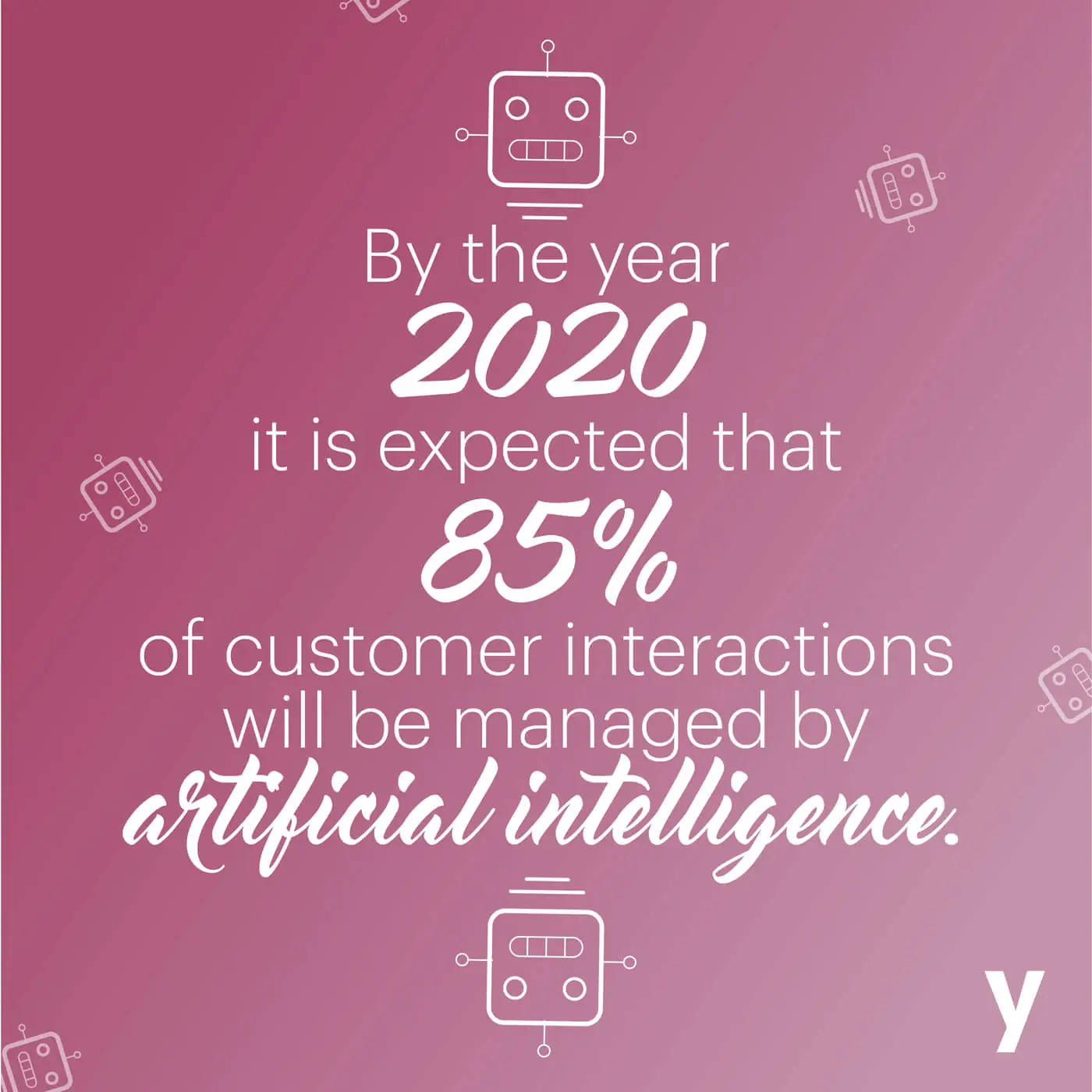Artificial intelligence in marketing is changing the way consumers and companies make decisions. From virtual assistants to real-time sales forecasting, marketing tools have evolved with the information age to be smarter, simpler, and more effective. More than ever, artificial intelligence in marketing will play a pivotal role in creativity, communication, and real-time strategy for marketers around the world.
Data Processing
 The most obvious and direct example of AI in marketing is with targeted lead campaigns. Recommended items, ads that track behavior and interest, and algorithms that scan text for emotional tells are being used to create relevant calls to action with higher conversion rates. 61% of businesses with an innovation strategy say they’re using artificial intelligence to identify opportunities in data that would most likely be overlooked without the power of AI.
The most obvious and direct example of AI in marketing is with targeted lead campaigns. Recommended items, ads that track behavior and interest, and algorithms that scan text for emotional tells are being used to create relevant calls to action with higher conversion rates. 61% of businesses with an innovation strategy say they’re using artificial intelligence to identify opportunities in data that would most likely be overlooked without the power of AI.
Partially, this is because electronic data collection and storage is increasingly attainable, affordable, and detailed. Marketers and data scientists are finally harnessing technical creativity to use data in new ways. The combination of human thought patterns and automation allow for streamlined decision making and data processing at previously unimaginable scales.
As we know, advertisers can create targeted ads to display information specifically for the viewer. But with the rise in popularity of virtual assistants, that viewer is increasingly likely to be artificially intelligent. Furthermore, data is being used by computers—not simply collected by them. Instead of relying on human models to draw conclusions, algorithms can be programmed to find models that work.
Predictive Analysis
Artificial intelligence in marketing is also changing the way companies operate. Algorithms can find better price points, forecast efficiently, and respond quickly to consumer demand. Predictive analysis is changing the way we find and learn information as human beings in real time, and the trend is expected to grow exponentially.
As marketers find more value in artificial intelligence, systems will be designed for richer data collection. This creates a self-feedback loop where richer data sets encourage further use of AI in marketing. You can find examples of this progress in the rapid development of speech, image, and language processing by virtual assistants.
Real Time Interactions
 Real time interactions with computers are getting smarter. Studies on user experiences are optimizing the way websites, apps, and electronics are designed. Banks and financial institutions can find fraudulent behavior and protect consumers in real time with behavioral analysis. As computers are programmed to learn more about human behavior, the potential benefits will expand for nearly every field.
Real time interactions with computers are getting smarter. Studies on user experiences are optimizing the way websites, apps, and electronics are designed. Banks and financial institutions can find fraudulent behavior and protect consumers in real time with behavioral analysis. As computers are programmed to learn more about human behavior, the potential benefits will expand for nearly every field.
Artificial intelligence in marketing is also receiving additional responsibility. Customer service and troubleshooting are partially automated. Social media campaigns are posted at carefully planned intervals. Lead nurturing campaigns react to growth in relationships, and abandoned carts beckon consumers to finish purchases. In fact, it’s said that by 2020, 85% of customer interactions will be dealt with by artificial intelligence.
Virtual Assistants are able to interface with multiple products and services. And service aggregators via app or website (such as Zapier and IFTTT) are finding ways to create a cohesive technological experience across mobile and desktop platforms. Much like the data collection self-feedback loop, implementation also inspires further innovation.
The Future of AI
Artificial intelligence is just starting to find its potential. Continual improvement is the future for data collection, research analysis, and active implementation, and the marketing firms that harness innovation will be rewarded. From data-driven creative to the development of AI systems (by other AI systems), artificial intelligence in marketing is going to change the world in 2017.




